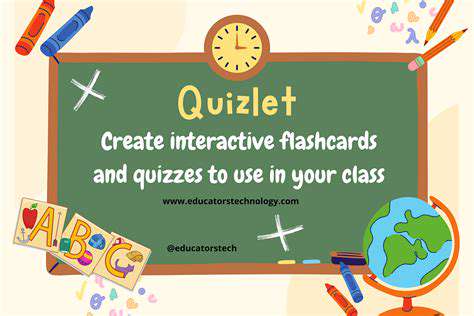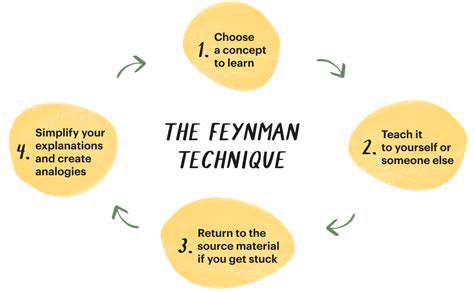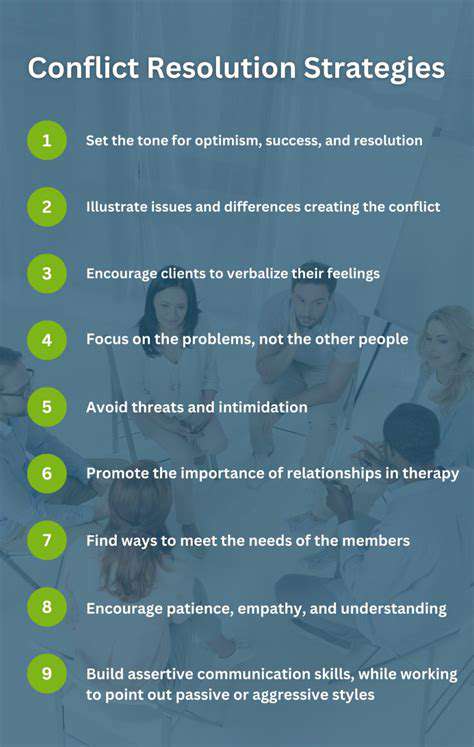Best Apps for Flashcard Creation
Key Benefits and Features of Flashcard Apps
The transformation from passive reading to active recall marks these apps' greatest strength. Imagine your brain as a muscle—each flashcard session is like doing targeted memory curls. The strategic repetition isn't just about brute-force memorization; it's about creating neural pathways that withstand the test of time. This proves especially valuable for subjects like organic chemistry reactions or historical timelines where rote learning is unavoidable.
Modern flashcard apps have evolved far beyond their paper ancestors. Picture this: A language learner hears native pronunciation while viewing cultural images, all within a single flashcard. The scheduling algorithms act as personal tutors, knowing exactly when you're about to forget a concept. Meanwhile, progress dashboards reveal your Achilles' heels—maybe those French irregular verbs need extra attention. This data-driven approach eliminates guesswork from studying.
Accessibility reshapes learning opportunities. That 15-minute bus ride? Prime study time. Waiting in line for coffee? Whip out your phone for a quick review session. This seamless integration of learning into daily life makes knowledge acquisition less about marathon study sessions and more about consistent, bite-sized efforts that compound over time.
Anki: The Powerhouse of Flashcard Software
Anki's Comprehensive Features
Among flashcard applications, Anki operates like a Swiss Army knife—versatile enough for casual learners yet powerful enough for neurosurgery residents. Its true differentiator lies in granular customization; users can tweak everything from font sizes to complex repetition algorithms. The multimedia support transforms abstract concepts into tangible learning experiences—medical students embed 3D anatomy models, while language learners incorporate native speech samples.
The deck architecture resembles a well-organized library rather than a random pile of cards. Users create hierarchical structures with nested decks and custom fields, perfect for complex subjects like law or engineering. This organizational depth means you might have a parent deck for Civil Engineering with child decks for Structural Analysis and Geotechnical Engineering, each containing precisely tagged cards for targeted study sessions.
Spaced Repetition for Optimal Learning
Anki's algorithm feels almost psychic—it somehow knows when you're on the verge of forgetting Japanese kanji or pharmacological mechanisms. This intelligent scheduling stems from the SM-2 algorithm, refined over decades of cognitive science research. The system doesn't just ask Did you remember? but How hard was it to remember? adjusting future reviews accordingly.
This scientific approach to memory creates what learners call the Anki effect—that moment when you effortlessly recall a fact months later, surprised by your own retention. The magic lies in the timing: reviewing material just before forgetting strengthens memory more effectively than constant cramming. It's the difference between building a sandcastle (temporary) and constructing with reinforced concrete (lasting).
Customization and Flexibility
Anki's open architecture invites tinkering. Power users employ CSS to design beautiful cards, while researchers create specialized note types for their fields. The add-on ecosystem supercharges functionality—imagine drawing directly on cards for anatomy studies or embedding interactive quizzes within your notes. This adaptability explains why Anki thrives across disciplines from music theory to aircraft maintenance.
The review customization borders on obsessive—you can set different learning steps for new cards versus lapsed ones, adjust daily limits per deck, even create filtered decks for last-minute exam prep. This fine-grained control means two medical students might use Anki completely differently—one favoring aggressive early repetitions, another preferring gradual exposure—yet both achieve stellar results.
Community and Support
The Anki ecosystem resembles an academic bazaar. Professors share meticulously crafted decks for Gross Anatomy, while polyglots exchange language resources. The forums buzz with troubleshooting advice and creative workflows—how a PhD candidate integrates Zettelkasten methods or how a memory athlete optimizes settings for competition. This collective wisdom shortens the learning curve dramatically.
Ease of Use and User Interface
Beneath its powerhouse capabilities, Anki maintains surprising approachability. The clean interface prioritizes function over flash—no distracting animations to derail study flow. Core actions like adding cards or reviewing follow intuitive patterns, while advanced features remain accessible but unobtrusive. This thoughtful design explains its global adoption from high schoolers to tenured professors.
The cross-platform sync works like magic—start reviews on your phone during breakfast, pick up where you left off on your laptop at the library. Even the backup system provides peace of mind, with versioning that lets you rewind accidental deletions. These thoughtful touches demonstrate how Anki respects users' time and effort.

As many office workers discover, muscle strain often manifests as nagging head pain. Modern workstations frequently create ergonomic nightmares—screens too low, chairs without lumbar support, keyboards at awkward angles. Combine this with stress-induced teeth clenching, and you've got a recipe for tension headaches that no amount of aspirin can fully alleviate.
Blooket: Gamified Flashcards for Engaging Learning

Blooket's Engaging Learning Approach
Blooket revolutionizes learning by disguising education as entertainment. Imagine a classroom where solving math problems unlocks treasure chests, and history facts determine your survival in a virtual zombie apocalypse. This psychological sleight-of-hand tricks students into voluntary learning—they're so focused on game strategy they don't realize how much they're retaining. The platform's genius lies in its dopamine-driven design, where correct answers translate to immediate in-game rewards.
The social dynamics add another layer. Students who normally dread quizzes suddenly compete fiercely in Gold Quest mode, where correct answers mine virtual gold. Teachers report quiet students blossoming as they strategize with teammates in Battle Royale mode. This peer interaction creates positive peer pressure—no one wants to let their team down by not knowing the material.
Diverse Content and Customization Options
Blooket's content library resembles an educational Netflix—browse thousands of teacher-created sets spanning elementary phonics to AP Calculus. The real power emerges when educators tailor these resources—maybe adding local examples to a geography set or embedding YouTube clips in a literature review. This adaptability makes Blooket equally effective for ESL classrooms and corporate training sessions.
The question format flexibility accommodates all learning styles. Visual learners benefit from image-based questions, auditory learners from audio clips, and kinesthetic learners from the physical interaction with game controls. Teachers can even import Quizlet sets, breathing new life into existing materials through Blooket's engaging formats.
Interactive Games and Challenges
Each game mode targets different cognitive skills. Tower Defense rewards quick recall under time pressure, while Factory emphasizes accuracy over speed. The variety prevents monotony—students might tackle vocabulary through five different game types in a week, each approach reinforcing memory through distinct neural pathways. This multisensory engagement explains why retention rates often surpass traditional methods.
Integration with Existing Educational Tools
Blooket plays nicely with other platforms. Google Classroom users can assign Blooket games as homework with automatic gradebook updates. Schools using Clever enjoy single-sign-on simplicity. This interoperability means teachers don't reinvent their digital ecosystem—they enhance it. The reporting features even allow standards-alignment tagging for districts focused on specific learning objectives.
Assessment and Data Analysis
Behind the fun visuals lies serious analytics. Teachers can spot patterns—maybe the class consistently misses questions about cellular mitosis during afternoon sessions, suggesting fatigue factors. These insights enable micro-adjustments—switching to more energetic game modes post-lunch or reteaching specific concepts before tests. The data also helps identify students who might need one-on-one support, even if they're performing adequately in the games.
The progress tracking extends beyond academics. Teachers notice improvements in students' perseverance as they retry challenging levels, or collaboration skills during team games. These soft skill developments often surprise educators who initially adopted Blooket purely for content review.








![Guide to Learning [Specific Digital Marketing Skill, e.g., Social Media Marketing]](/static/images/32/2025-06/AnalyzingandAdaptingYourSocialMediaPerformance.jpg)


